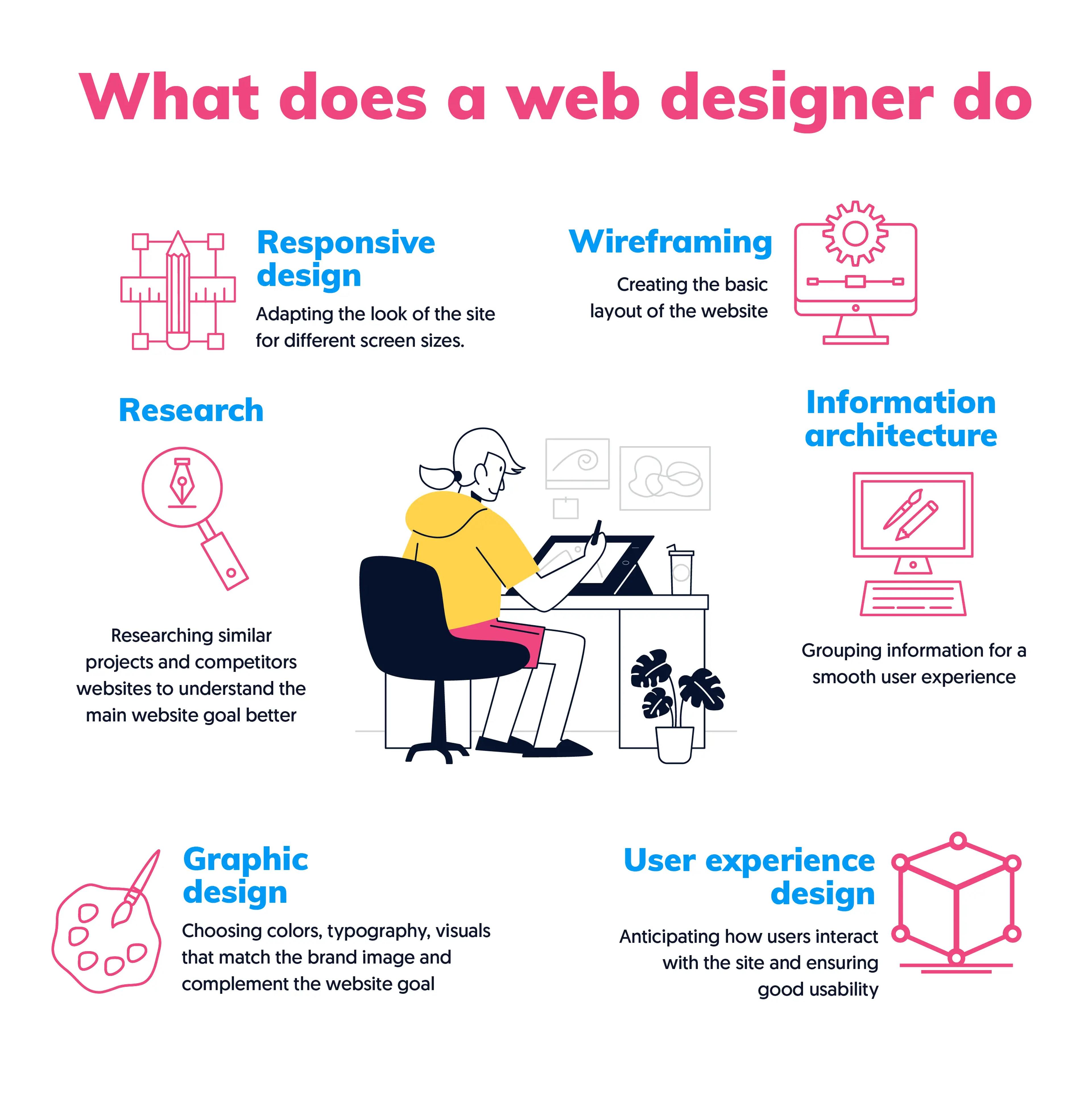Imaginative Web Style Solutions for Modern and Engaging Websites
In the realm of web design, the search of modern-day and interesting remedies has actually come to be progressively crucial for businesses aiming to record customer focus. By incorporating strong color schemes, interactive elements, and receptive designs, designers can create experiences that not only reverberate with individuals however likewise enhance brand name identification.
Accepting Bold Color Pattern
In internet design, the strategic usage of strong color design can dramatically boost individual engagement and brand name identification. By employing vibrant tones, designers can create aesthetically striking sites that capture focus and promote a memorable experience. A well-chosen color scheme not just reflects a firm's values yet likewise evokes details emotions that can influence individual habits.
Bold shades can be employed to lead individuals' focus to crucial elements such as phone call to activity, improving conversion prices. For circumstances, using contrasting colors for switches and links can make these components stand apart, motivating individuals to connect quicker. A cohesive color system throughout the website strengthens brand name acknowledgment, producing a sense of knowledge and count on amongst site visitors.
Nevertheless, it is critical to balance strong colors with appropriate white room to prevent overwhelming users. Efficient use of typography also complements bold colors, making sure readability while keeping aesthetic appeal. Ultimately, accepting strong color systems in internet layout not just boosts visual quality but also plays an essential function in accomplishing calculated organization purposes, making it an essential consideration for modern web growth.

Using Interactive Elements
Interactive components are necessary in modern website design, as they significantly improve user interaction and create a much more dynamic searching experience. By incorporating functions such as computer animations, hover results, and clickable aspects, internet sites can encourage customers to explore material better and return for future visits.

Micro-interactions, such as refined animations when a button is clicked or a form is sent, can additionally boost the customer experience by providing prompt responses. These little details can make the website really feel even more responsive and alive, fostering a feeling of link between individuals and the site.
Furthermore, gamification components, such as rewards for finishing particular activities, can inspire customers to engage with the content extra deeply. By thoughtfully incorporating these interactive components, internet designers can produce a memorable and appealing online experience that resonates with customers and encourages them to return.
Applying Responsive Style
Applying receptive style is essential in today's multi-device landscape, making certain that sites give an optimal viewing experience throughout various screen dimensions. As users progressively access the internet with smart devices, tablets, and desktops, a one-size-fits-all strategy is no more practical. Receptive layout allows for seamless navigation and interaction, adapting design and web content to fit the device being used.
Key principles of receptive layout consist of liquid grids, versatile pictures, and media inquiries. Media queries help with the application of different designs based on the tool's features, such as size, elevation, or resolution, enabling designers to tailor the user experience effectively.
Additionally, responsive design enhances search engine optimization performance, as search engines prefer mobile-friendly websites. By carrying out responsive design, organizations not just enhance user contentment and involvement however also increase their reach in an affordable electronic landscape. As modern technology remains to develop, adopting receptive style has actually ended visite site up being an essential practice for any kind of contemporary and interesting site.
Incorporating Multimedia Material
Multimedia content plays an essential function in creating interesting and dynamic internet experiences that capture customers' interest and boost understanding. By integrating message, photos, audio, and video clip, web sites can offer a richer story that appeals to different learning designs and preferences. This combination not just reinforces customer interaction but additionally aids in communicating complex ideas succinctly.
Including premium photos and infographics can break up textual web content, making it more digestible. In a similar way, video tutorials and discussions can give in-depth understandings that static web content may not completely connect. Audio components, such as podcasts or background music, can likewise boost the atmosphere of a site, developing an extra immersive experience.
Moreover, the calculated use multimedia can enhance search engine optimization efficiency, as search engines favor diverse material types, boosting presence. Nonetheless, it is crucial to guarantee that multimedia aspects do not impede page load times, as this can result in individual irritation. By stabilizing multimedia assimilation with efficiency factors to consider, internet developers can develop aesthetically attractive and practical sites that resonate with users, fostering a much deeper connection and encouraging return gos to.
Prioritizing Customer Experience

To achieve an optimal individual experience, developers must focus on a number of vital principles. First, responsive layout is essential; sites should adapt effortlessly to numerous tools and screen sizes. This ease of access ensures that top article individuals can engage with content despite their picked system. Clearness in format and power structure is critical. Clear phone call to activity, legible typography, and arranged web content overview individuals, lowering cognitive lots.
Eventually, focusing on UX not just elevates customer fulfillment but likewise drives engagement and conversion prices, making it a critical component of modern internet design methods. By positioning individuals at the facility of design initiatives, web sites can create enduring, positive perceptions that urge return gos to.
Verdict
To conclude, modern-day web design options that emphasize strong color design, interactive elements, receptive layout, and multimedia content substantially boost user interaction and contentment. Prioritizing user experience with clear formats and continual feedback even more adds to boosted conversion prices. By adopting these techniques, internet sites can efficiently mesmerize visitors and strengthen brand name identification, inevitably leading to a more dynamic and appealing on the internet existence. The combination of these layout concepts is reference crucial for achieving contemporary internet style goals.